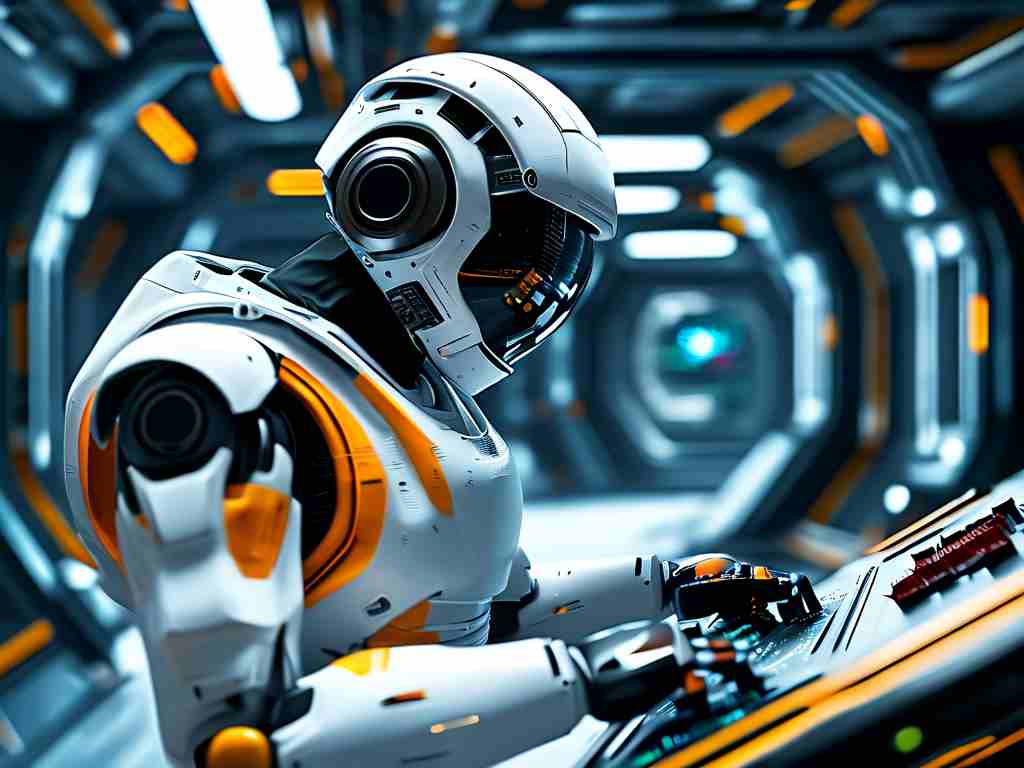The final frontier is no longer just for astronauts. As humanity's ambitions in space expand from lunar bases to asteroid mining, a new breed of professionals is in soaring demand: space robotics experts. This burgeoning field, sitting at the exhilarating intersection of mechanical engineering, artificial intelligence, aerospace systems, and advanced computing, is rapidly becoming one of the most dynamic and promising career landscapes within the broader tech and engineering sectors.

The surge in demand is undeniable. Driven by both governmental space agencies like NASA and ESA, and an increasingly vibrant private sector led by companies such as SpaceX, Blue Origin, Astrobotic, and countless startups, the need for sophisticated robotic systems is critical. These aren't just simple machines; they are highly autonomous, resilient, and intelligent agents designed to operate in the harshest imaginable environment. Tasks range from the intricate assembly of massive space telescopes and habitats in orbit, to prospecting resources on the Moon or Mars, performing delicate satellite repairs millions of miles from Earth, and conducting scientific exploration in locales too dangerous or distant for human crews.
This translates into diverse and exciting career avenues. Opportunities abound in several key domains:
- Satellite Servicing & Assembly: Designing and operating robots for on-orbit satellite inspection, refueling, repair, and the modular construction of large structures. Projects like NASA's OSAM-1 mission highlight this need.
- Planetary Exploration & Resource Utilization: Developing rovers, landers, and specialized manipulators for exploring planetary surfaces, conducting geological surveys, and extracting or processing in-situ resources (ISRU). Think Perseverance rover, but for commercial mining or habitat preparation.
- Space Infrastructure Maintenance: Creating robotic systems for maintaining and repairing future space stations, lunar gateways, and deep-space transit vehicles.
- Space Debris Mitigation: Engineering solutions, potentially involving robotic capture and de-orbiting, to tackle the growing problem of orbital debris.
- Ground Support & Simulation: Designing terrestrial testbeds, control systems, and simulation environments critical for validating space-bound robotic operations.
Landing a role in this field requires a potent and often interdisciplinary skillset. Core engineering fundamentals are paramount:
- Robotics Engineering: Deep understanding of kinematics, dynamics, control theory (especially for dealing with time delays in communication), actuator design, sensor integration (vision, force/torque, LiDAR), and mobility systems for challenging terrains (regolith, low gravity).
- Software & AI: Proficiency in languages like C++, Python, and ROS (Robot Operating System) is essential. Expertise in AI, particularly machine learning for autonomy, computer vision for navigation and manipulation, path planning in complex 3D environments, and robust software architecture for fault tolerance is increasingly critical.
- Aerospace Engineering: Knowledge of the space environment (vacuum, extreme temperatures, radiation effects on electronics and materials), orbital mechanics, launch vehicle constraints, and spacecraft systems engineering principles.
- Systems Engineering: The ability to integrate complex mechanical, electrical, and software subsystems into a cohesive, reliable whole that meets stringent mission requirements under harsh conditions.
- Problem-Solving & Adaptability: Space missions are fraught with unknowns. Engineers must excel at creative problem-solving, often with limited data and under intense pressure, adapting designs and operations based on real-time challenges.
- Understanding of Orbital Mechanics & Space Environment: Grasping the nuances of orbital dynamics, radiation hardening techniques, thermal control in vacuum, and the effects of microgravity or partial gravity on robotic operations is non-negotiable.
Beyond the technical skills, candidates who demonstrate strong collaboration, communication (especially across engineering disciplines), rigorous testing methodologies, and a passion for pushing technological boundaries stand out. Experience gained through relevant internships, participation in university robotics competitions (like RoboSub or NASA challenges), contributing to open-source robotics projects, or advanced degrees (MS/PhD often preferred for R&D roles) significantly boosts prospects.
While the field is exceptionally promising, it's not without its challenges. The development cycles for space systems are notoriously long and costly, demanding immense patience and resilience. The consequences of failure are high, requiring meticulous attention to detail and exhaustive testing. Competition for roles at the most prestigious agencies and companies is fierce. Furthermore, the technology evolves at a breakneck pace, necessitating a commitment to continuous learning.
Looking forward, the trajectory for space robotics careers is steeply upward. The Artemis program's push for a sustained lunar presence, ambitious plans for Mars exploration, the burgeoning satellite mega-constellation economy requiring maintenance, and nascent concepts like asteroid mining all hinge critically on advanced robotics. Innovations in AI autonomy, dexterous manipulation, and robust materials will further unlock capabilities and create new job profiles.
For engineers and technologists seeking a career that combines cutting-edge innovation with profound purpose – contributing directly to humanity's expansion into the cosmos – space robotics offers an unparalleled pathway. It demands the highest levels of skill and dedication but rewards professionals with the opportunity to literally shape the future of our species beyond Earth. The tools to build that future are increasingly robotic, and the hands that design, build, and command them are in unprecedented demand.

